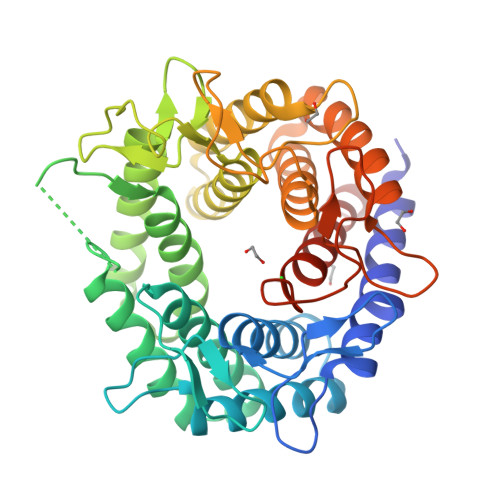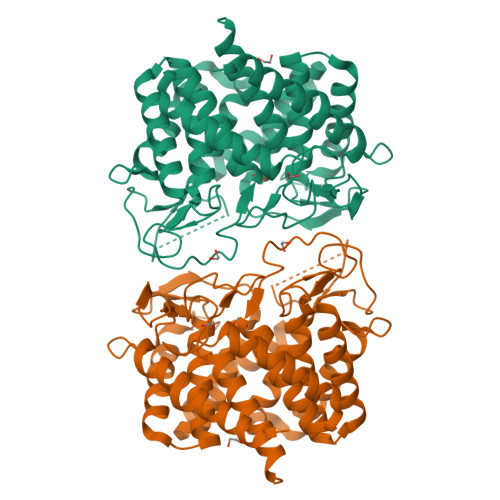The crystal structure of the N-acetylglucosamine 2-epimerase from Nostoc sp. KVJ10 reveals the true dimer.
Halsor, M.J.H., Rothweiler, U., Altermark, B., Raeder, I.L.U.(2019) Acta Crystallogr D Struct Biol 75: 90-100
- PubMed: 30644848
- DOI: https://doi.org/10.1107/S2059798318017047
- Primary Citation of Related Structures:
6F04 - PubMed Abstract:
N-Acetylglucosamine 2-epimerases (AGEs) catalyze the interconversion of N-acetylglucosamine and N-acetylmannosamine. They can be used to perform the first step in the synthesis of sialic acid from N-acetylglucosamine, which makes the need for efficient AGEs a priority. This study presents the structure of the AGE from Nostoc sp. KVJ10 collected in northern Norway, referred to as nAGE10. It is the third AGE structure to be published to date, and the first one in space group P4 2 2 1 2. The nAGE10 monomer folds as an (α/α) 6 barrel in a similar manner to that of the previously published AGEs, but the crystal did not contain the dimers that have previously been reported. The previously proposed `back-to-back' assembly involved the face of the AGE monomer where the barrel helices are connected by small loops. Instead, a `front-to-front' dimer was found in nAGE10 involving the long loops that connect the barrel helices at this end. This assembly is also present in the other AGE structures, but was attributed to crystal packing, even though the `front' interface areas are larger and are more conserved than the `back' interface areas. In addition, the front-to-front association allows a better explanation of the previously reported observations considering surface cysteines. Together, these results indicate that the `front-to-front' dimer is the most probable biological assembly for AGEs.
Organizational Affiliation:
The Norwegian Structural Biology Centre (NorStruct), Department of Chemistry, UiT - The Arctic University of Norway, 9037 Tromsø, Norway.




















